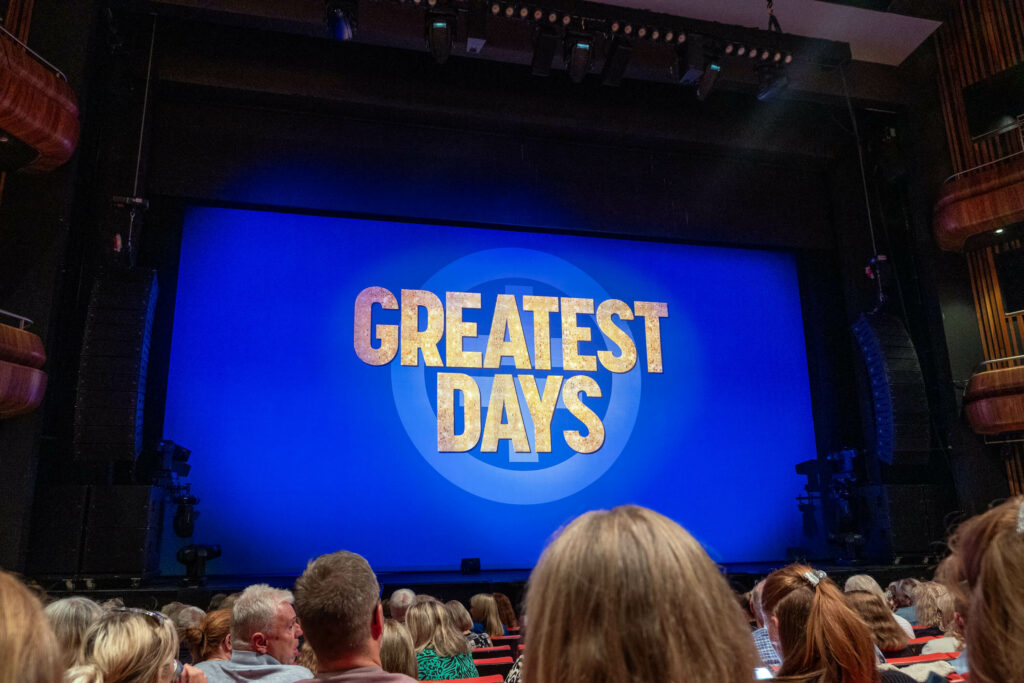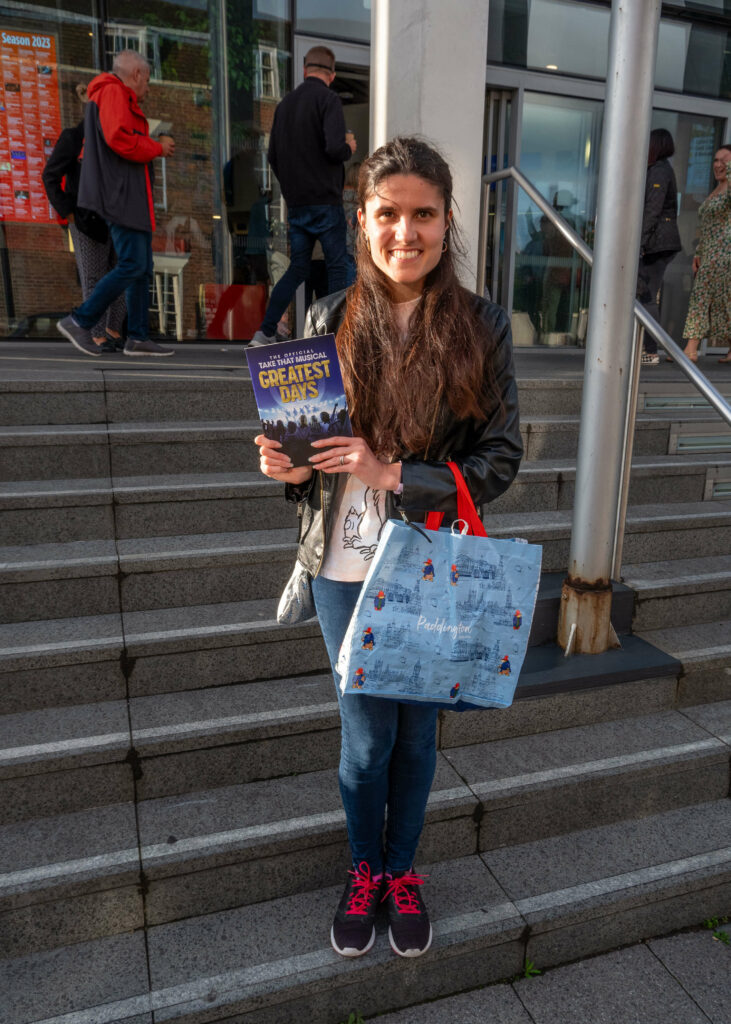★★
[AD – PR invite*]
2023 is a busy year for Take That, with their coronation performance, a new UK tour of their official musical and the release of the film adaptation. Greatest Days* is the new title for ‘The Band’ which first opened in 2017 and is now back on tour for 2023-2024. Directed by Stacey Haynes and book writer Tim Firth, this week I was invited to review the reimagined production at The Marlowe Theatre and having seen the film in June, I was intrigued to find out how the creative team would recreate the movie’s high production value on stage. On the show’s first night in Canterbury I headed to the Marlowe to watch Greatest Days and see if it would be ‘the greatest musical of our lives’.

Background
The show centres around Young Rachel (Olivia Hallett): a sixteen year-old secondary student from the North and a huge fan of the fictional nineties pop group ‘The Band’. Through her school days we learn that she first became a fan as a teenager and bonded with a close group of friends over their infatuation with the boys. Events of their teenage years are played out on stage during the first act but just before the interval, the musical jumps forward 25 years to when the girls are all grown up and living their separate lives. Rachel (Rachel Marwood) has won tickets to The Band’s reunion tour in Europe and she gets to take three friends or family members to Athens for the weekend. After all this time, who will she choose to join her on that plane? We find out the answer in just over two hours of theatre including an interval.
Initial thoughts
I am conflicted by Greatest Days as it is a carefully considered story about friendship and belonging, but there are several factors that let the production down. From the somewhat overlooked set to the excessive importance of The Band, I don’t think the focal groups of women are given a fair opportunity to show off their musical talents.

The depiction of The Band
My primary issues with the stage musical lie with the depiction of the boy band, as their roles as figures of Rachel’s mind don’t transcend well to live theatre. Taking on the mantle of the main character’s guardian angels, The Band (Kalifa Burton, Jamie Corner, Archie Durrant, Regan Gascoigne and Alexanda O’Reilly) are there for her through thick and thin, but sometimes this literally means that they are lingering on stage. They are meant to be uncomfortably nearby as they are an extension of her imagination, but the enforced wooden personas make it difficult for the actors to showcase a sense of personality. Whilst I understand that The Band are not meant to represent Take That, the original five-piece really did showcase their identities. There could have been more opportunity for the actors to experiment with the musician personas, even adding an air of cheekiness or charisma to the roles.
There were however a couple of moments where the group quite literally ‘shined’. ‘The Flood’ was a brilliant example of this with the singers on raised platforms, recreating iconic boy band dance moves. I found myself sitting up in my chair, wishing that this level of energy had been carried over to the rest of the musical numbers.

Staging, sets and overall production value
Recently touring sets have been breaking boundaries in terms of their technology and splendour. I found myself disappointed by Lucy Osborne’s ‘safe’ staging, with the same rotating steps and platforms acting as backdrops for the majority of the musical’s locations. There are also very little visual changes between the fictional venues portrayed, excluding additional signs and typography.
Members of The Band can be seen pushing the steps into place between scenes and there was one particular moment in the second act where the transition came across as particularly untidy. It felt unchoreographed, painfully slow and you could witness every detail of their movements. It would have been far less noticeable if members of the production team were rotating the set in black clothing instead.

Use of colours
Greatest Days is a dark production in its overall aesthetic, but Osborne’s decision to dress the principal characters in matching bright colours helps to pair the younger and older characters together. The colours successfully draw links between the two generations, a clever solution to the challenge of finding actresses to play the older and younger women.
In the finale, Osborne opts for rainbow coloured dresses and suits, which work in harmony with Rob Casey’s lighting effects. I was left wishing that they’d adopted this wider colour palette for the rest of the show. In places it wouldn’t have been appropriate given the emotional themes, but it was such a fun decade, why not be bolder with the set and costumes? It feels like a missed opportunity.

Overall thoughts
Despite my discontent with various elements of the show, the underlying themes of friendship and Take That’s infectious songs still make the musical enjoyable. If you are a fan of their back catalogue, why not go and see the production for yourself and make up your own mind. In the spirit of the show’s themes, you could even go with your closest friends. Whilst I think this production falls short in places, you might take a completely different view. The musical runs at The Marlowe Theatre until Saturday and last minute tickets can be purchased via the theatre’s website.
Thanks for reading my blog today.
Love Kat xxxx
*My ticket and programme for Greatest Days was gifted in exchange for a review.

Comments